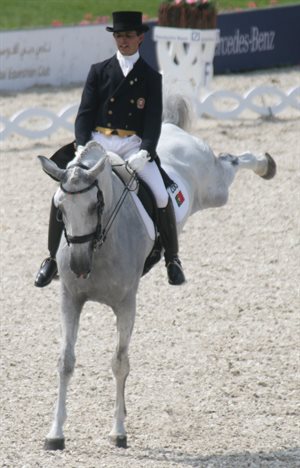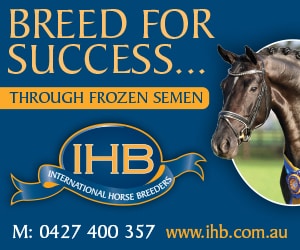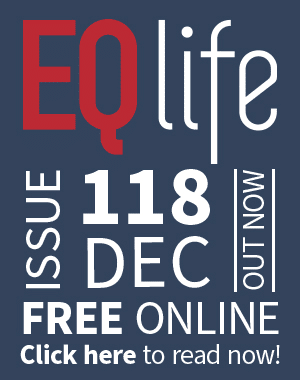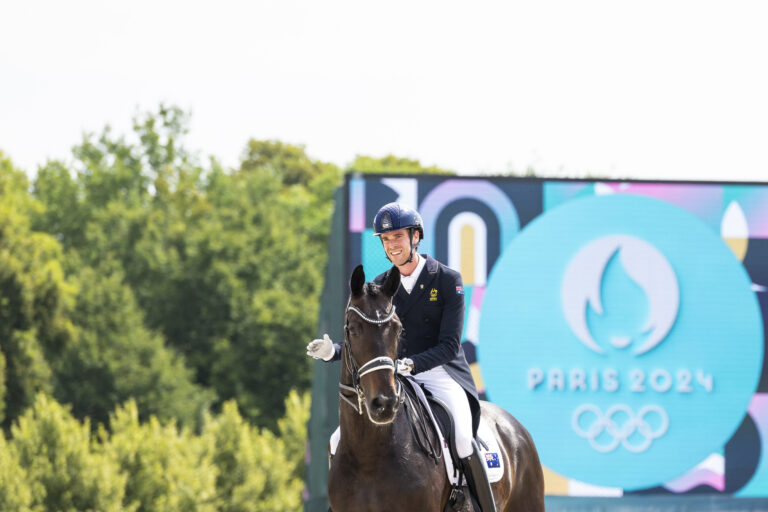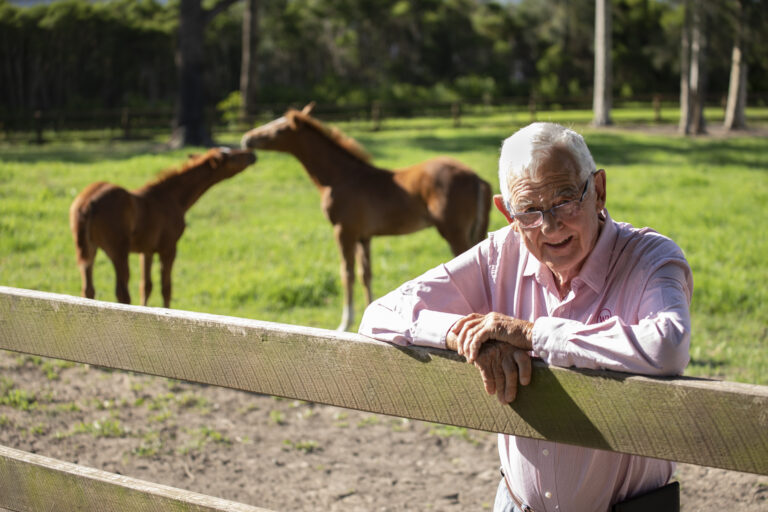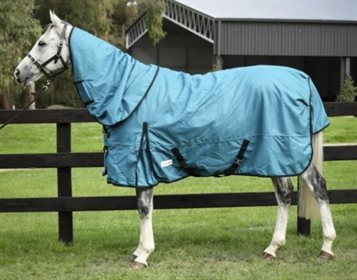This article has appeared previously with Equestrian Life. To read the current digital issue, please click here.
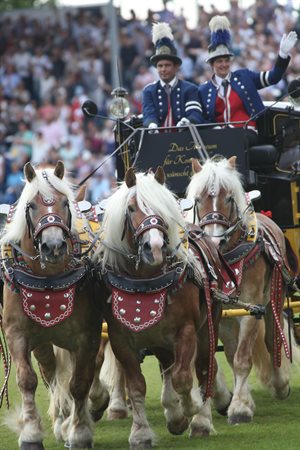
Photographing horses is one of my favourite pastimes!
© Roger Fitzhardinge
Words and photographs by Roger Fitzhardinge
If you read a sentence like “the weather was beautiful before it turned horrid”, that sentence paints a picture; but if you took the word “beautiful” by itself or “horrid” by itself, then you have opposite mind images. It is the full sentence that makes its own real picture. Just as a photo conjures up a feeling, it is just one word, it’s not a sentence, and so with horses in motion.
When you see published photos, you must realise it is only a moment in time; the next moment may be totally different, sometimes for better, sometimes worse. Also remember that there is Photoshop, so don’t think that every photo you see is an absolute representation of the horse as there are so many ways to transform a photo into something that was not the truth at the time of being taken.
We must remember that photos only capture a moment in time and don’t tell the full story
© Roger Fitzhardinge
An individual moment may not be a true representation of that horse’s nature and movement, but by the same token it could also be a true representation, so that’s where photographing horses is so cool. You are able to conjure up a feeling through an image to portray what you felt about the moment, the horse or the person and, of course, depending on your feeling at the time. Photography can be so beautiful, thought provoking and emotional, just as it can also be vindictive.
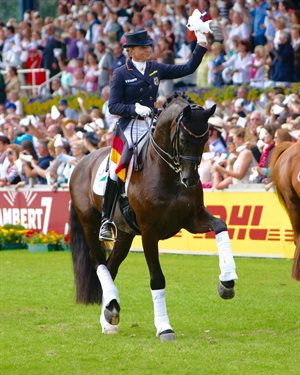
Equine photography can be thought-provoking
© Roger Fitzhardinge
STRIDE AND BALANCE
Everyone likes to photograph certain movements that fascinate them with any horse, but the most common photograph is in trot. So when do you take the photo to portray the stride and balance? There are many ways to do this.
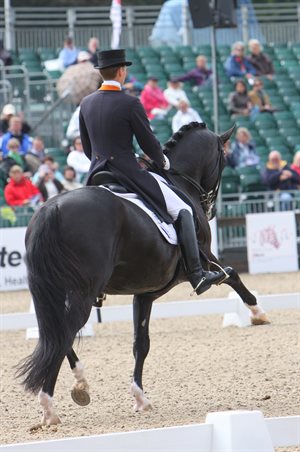
Extended trot is great taken with the camera at three quarter angle and the leading leg directing away from the camera
© Roger Fitzhardinge
For me, taking extended trot is not always so easy. Take a three-quarter angle and then shoot within the first several steps, as inevitably the longer the horse makes the movement, the less they stay up and balanced. By taking a three-quarter angle, you cover up a multitude of balance and shape problems that you see in the neck. Also, with shots where you can’t have a high shutter speed, there is more chance of sharp pictures. Whether to take the photo with the inside or outside front leg up is up to the individual, but I prefer to shoot as the foreleg away from the camera is forward and extending. You need to watch for that moment as you track the horse by saying in your mind “now, now” and press the button at that moment. To look at the photo with the outside leg forwards sort of invites the viewer into the horse – but when the inside leg is forward it tends to push the viewer away!
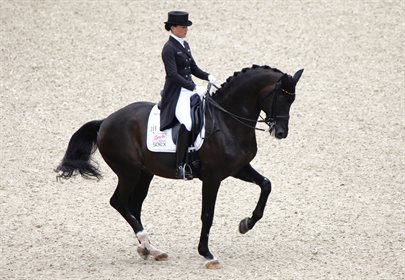
Timing, timing, timing!
© Roger Fitzhardinge
I am a great one for taking these three-quarter angles in portrait as opposed to landscape, but if you aren’t getting in too close, if you shoot in landscape you can always crop to vertical, but not the other way around. I like to set the shutter speed around 800 or even higher and let the camera work out the aperture, or set it on sports mode.
CRITICAL LIGHT
Light is always the most important factor. Shoot with the sun behind you so look at your shadow; keep the shadow in front of you and the sun over your shoulder. Ideally it is the best to shoot in the early morning before 10am and/or the afternoon after 3pm, as the light is more side on to the shot and not from above where it casts shadows on the subject. Of course, this is often not possible at competitions, and so when you frame the picture, try to get the horse in all the frame with little else; if you focus on the rider’s knee that will usually get the rider’s head and feet in the frame.
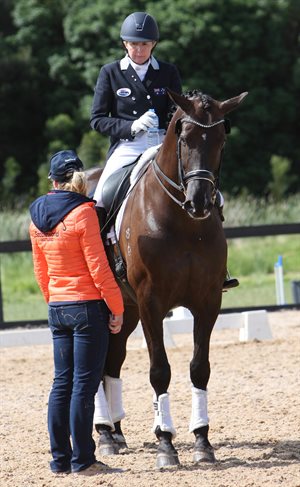
Focus on the rider’s knee; aim for that to be in the centre of the image
© Roger Fitzhardinge
Taking photos in trot, I enjoy from the inside of a corner or a circle as you get a feeling of bending and energy with the horse coming a little towards the camera. Again the neck shape looks good and you feel drawn in towards the horse. Other good angles in trot are half-pass from directly in front, or artistic from behind, as the leading front leg is out to the side. Half-pass from the side is nondescript and rarely looks good in photos. Walk is not a great pace to take, but interesting for mood pictures when leaving the arena, as it is more about the rider’s facial expression. Piaffe and passage shots are not so easy either, but when you have a good piaffe or passage then again, for me, towards the camera and tight is great.
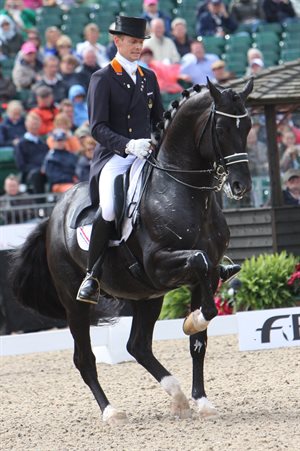
Piaffe or passage, when tight and towards the camera, can work well
© Roger Fitzhardinge
JUMPING OUT AT YOU
Canter can be fantastic and the best ones are in extended canter on the long side, again from a little in front and in the first six or so strides. In photos, horses coming towards you jump out of the photo and are imposing and demand attention. Flying changes give you lots of time, and I look for the leading foreleg to be at the top of the stride, not as it extends. Canter can be not great but extended is sometimes fabulous, as are flying changes, and for some reason the change that jumps away from the camera always looks better. Canter pirouettes are interesting to take in portrait and at the top of the strides; as they come around you can get some awesome images.
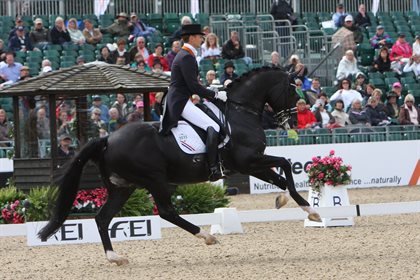
Extended canter on the long side can be striking!
© Roger Fitzhardinge
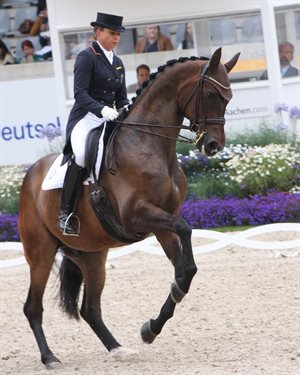
Canter pirouettes are interesting to take in portrait and at the top of the strides
© Roger Fitzhardinge
Above all, remember that the balance and the way the horse travels will determine the photo. The camera never lies and some horses are just hard to photograph. Bless the grey horse, and it’s a shame for photographers that black is a popular colour and “very in”, as it is the most difficult colour to shoot of all! Good early morning or late afternoon light is better for dark horses, and with a neutral background, not dark. If it is a light background, make sure you keep in as tight as possible to delete the sky or pale backgrounds. If you are photographing at home or for posed shots with black horses, don’t have white clothes and bandages as they bow the monitoring into confusion and you need to use manual settings to adapt, so muted tones with black or dark horses are better. The sun that comes more above the dark horses will cast shadows on them, and getting good photos with midday sun is a nightmare. Indoors even worse, yet indoors at night works well… go figure.
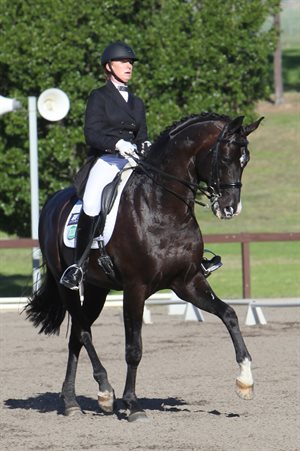
Dark horses are notoriously hard to photograph well
© Roger Fitzhardinge
The tighter the photo to the subject the better, as the overall light monitoring will give a better quality to the photo. As for indoor photography of moving horses, it’s tricky as many surfaces are dark, and if the kickboards are dark and the side walls allow light in, then it is seriously hard. You need to keep the ISO high to accommodate the highest shutter speed for sharp images, and always keep back light to a minimum and shoot with horses coming towards the camera for less blur. Where possible, get a little above looking down to eliminate backlight. If you don’t have a monopod then rest the camera on a rail or wall to keep as still as possible to decrease shutter blur.
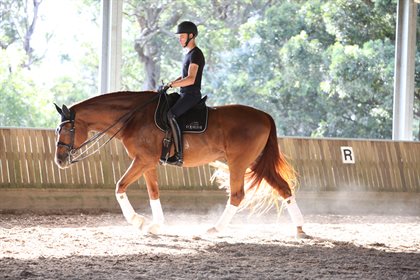
A lower shutter speed can sometimes produce a lovely image
© Roger Fitzhardinge
For fun, try a lower speed and follow the horse as it moves and you get some really interesting stuff. Also, it’s fun to focus and then quickly bring the zoom in or out as you push the shutter – I love that stuff. When you get bored just experiment with slow speeds and following horses. The halt at the end of the test and tight on the rider is always a fabulous moment, one that exudes expression and emotion. Get ready for that moment!
My motto is to take a lot of photos, and I mean a lot. I never use the motor drive as most cameras are not fast enough and miss the most opportune moment.
MAKING A STATEMENT

A horse’s expression is of the utmost importance
© Roger Fitzhardinge
A great photo for me conjures up a feeling, a mood or makes a statement. For me, a horse’s expression is of the utmost importance in every photo and the most important feature to feel; this is easily seen by the position and attitude of the ears. If you are shooting tight head shots, always be aware that the ears must have a paler background so the eyes don’t blend in. You can’t see the attitude as the position of the ears is unclear with trees or darkness in the backdrop… beware, as ears, hence attitude, get lost easily amongst leafy scenery. Simply compose the shot: look to see if the ears are defined. If not, move slowly about until the composition has the ears in a defined area. What you see through the viewfinder is what will come out in the photo. The camera lens only takes what your eye sees, so don’t expect a miracle.
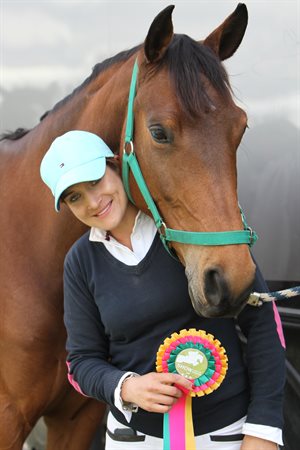
If you are shooting tight head shots, always be aware that the ears must have a paler background
© Roger Fitzhardinge
Equine photography is exceedingly interesting. It is an art that takes practice, but you can learn so much and shooting now is basically free, unlike when you had to get film processed and it was expensive and time delays were frustrating. But it made you learn to frame up carefully and check the camera settings and keep an eye on the ISO and shutter speed.
If everyone went to university to learn how to photograph, everyone would have the same style. Be individual and experiment. Take a pen and notebook and make notes about settings for when a picture works, or you will forget how you did it. Watch the professionals and see where they shoot from and follow their positioning and you will learn to see what they are seeing. In Australia the light is exceedingly harsh and the backgrounds usually with few spectators; that all needs to come into the equation.
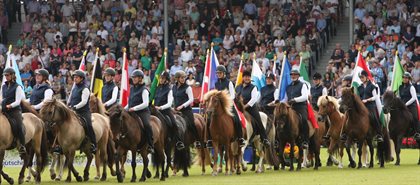
International shows are great to photograph!
© Roger Fitzhardinge
If you ever get to photograph at international shows in Europe or the Olympics, you will be blown away by how easy it is to get good photos. Seriously, that’s so, so easy; it is Australia that is hard. The light is harsh and the shadows strong. When the photographers came to the Sydney Olympics they complained non-stop about the harsh brightness of the light… they had their work cut out getting accustomed to it. Bright light and white marquees are Aussie favourites, but beware of those white backgrounds and watch out for those dreaded wheelie bins, they are a pet hate and they are everywhere, not to mention light poles and wires – or posts under horses’ stomachs to give an extra leg.
Practice and experience makes perfect. Take lots of photos and experiment and make notes. There is nothing more fabulous than looking down the barrel of a lens watching horses work. It takes you to another place. Be yourself, let loose, be daring and different!
Enjoy. And always love to see other people’s ideas and ways of looking at horses, as it creates ideas and concepts. Be observant. Photography is a very strong artistic and narrative form, and when using social media think twice before publishing, as a millisecond in a day of photos can be seriously strong and often not conducive to promoting the beauty of such a fantastic sport, yet on the other hand so positive and beautiful in portraying what every rider enjoys and wants to see. Be thoughtful in your images and make sure you are portraying what you want to express.
Photography can make an overwhelming difference to people’s perceptions of each other, animals, the sport, life, living and themselves!
READ THE LATEST NEWS ARTICLES HERE

